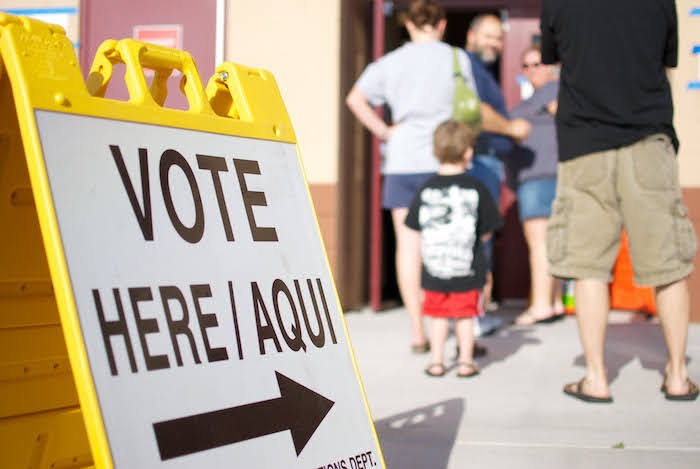A plebiscite is a vote among the people to tell the government what they want. They’re normally not binding — that is, they don’t require the government to do anything. They just let the government know how the people feel. Puerto Rico has already held six plebiscites in the 20th and 21st centuries, all votes intended to tell Congress what permanent political status Puerto Rico’s voters want. The Puerto Rico Status Act calls for one more plebiscite, but this one will be different.
20th century plebiscites
|
1967 |
1993 |
1998 |
|
|
Independence |
4,248 (0.6%) |
75,620 (4.4%) |
39,838 (2.54%) |
|
Commonwealth |
425,132 (60.4%) |
826,326 (48.6%) |
993 (0.06%) |
|
Free Association |
NA |
NA |
4536 (0.29%) |
|
Statehood |
274,312 (39.0%) |
788,296 (46.3%) |
728,157 (46.49%) |
|
None of the above |
NA |
NA |
787,900 (50.3%) |
|
Electoral turnout |
66% |
74% | 71% |
The three plebiscites in the 20th century showed commonwealth — that is, the current territorial status — the clear winner with 60.4% of the vote in 1967 and in first place in 1993, with 48.6% of the vote compared with 46.3% for statehood. In 1998, statehood again got over 46% of the vote, but “none of the above” reached 50.3%.
Territorial status won the votes in 1967 and 1993, though it is probably that voters had a different understanding of “commonwealth” and were thinking about the mythical “enhanced commonwealth” rather than the current territory status. No action was taken by Congress because the status quo won.
In 1998, the winning vote for “none of the above” meant that Congress couldn’t take action in response. Congress can always admit Puerto Rico as a state without a referendum, but taking no action was a reasonable response to the 20th century votes.
The 21st century votes
In all three votes in the current century, statehood has won.
|
2012 |
2017 |
2020 |
||
|
Independence |
NA |
5.5% | 1.5% |
NA |
|
Commonwealth |
46.0% |
NA |
1.3% |
NA |
|
Free Association |
NA |
33.2% |
under independence |
NA |
|
Statehood |
NA |
61.3% | 97.2% |
655,505 (52.52%) |
|
None of the above |
NA |
NA |
592,671 (47.48%) |
|
The 2012 referendum included two questions: first, would voters like to keep the current status? With 46% of the vote, this option lost. The second question asked what permanent status voters would prefer, and statehood received 61.3% of the vote. Free association got 33.2% of the vote and independence had just 5.5%, higher than the percentages in the 20th century but still a tiny fraction. The White House stated that this was “a clear result,” but later quibbles about blank ballots allowed Congress to fail to take action.
In 2017, anti-statehood factions boycotted the vote and 97.2% of voters chose statehood. Obviously, nobody boycotts a vote they can win. However, the tactic allowed opposition to claim that there was no clear winner in the referendum. This is part of the ongoing election denial strategy. It allowed Congress to continue ignoring the results of the votes.
In 2020, a simple yes/no vote on statehood, like the ones held by Alaska and Hawaii in the 200th century, got a clear majority of votes for statehood. Note that the difference between “yes” and “no” was much greater than the difference between statehood and commonwealth in 1993. It was also larger than the difference between statehood and “none of the above” in 1998. Yet anti-statehood factions complained that it wasn’t a big enough majority.
These groups have also questioned voter turnout, though that is never a factor in American elections. The persistent pattern of election denial helps to give Congress the feeling that they can fail to take action again and again. “We’ll do whatever Puerto Rico wants,” some members say, “as soon as they figure it out.”
The upcoming referendum
The new plebiscite called for in the Puerto Rico Status Act will be the 7th status vote held in Puerto Rico. Many of us are tired of the votes, all of which have resulted in no action from Congress. But this vote will be different.
First, this will be the first federally-sponsored referendum.
Second, the bill is designed to be self-executing. For decades, Puerto Rico has been demanding that Congress clearly state which options it will support. This time, only options Congress is willing to support will be on the ballot. By passing the bill, Congress agrees that they will take action on whichever option the voters favor.
It may be that the three options as they are currently described in the bill — statehood, independence, or free association — will be amended before the bill passes. But the bill is clear: if voters choose statehood, Puerto Rico will become a state and if they choose independence, Puerto Rico will become independent.
Reach out to your congressional reps and senators and ask them to support the Puerto Rico Status Act.








No responses yet